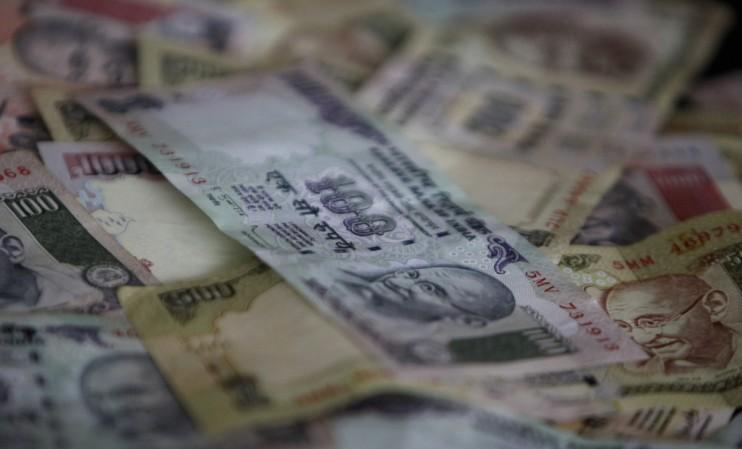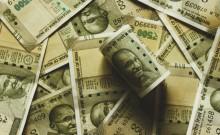
The Indian rupee experienced a depreciation of 20 paise, reaching 86.36 against the US dollar in early Monday trading. This decline was largely driven by the strong performance of the American currency in global markets and a negative trend in domestic equities. Forex traders observed that the rupee's slide was intensified by the breach of the critical 86.00 level, which accelerated its decline as the recovering dollar index weakened rupee sentiment.
At the interbank foreign exchange, the rupee opened at 86.27 against the greenback. During the initial trading session, it hit a low of 86.36, marking a 20 paise drop from its previous close. On the preceding Friday, the rupee had settled 4 paise lower at 86.16 against the US dollar. Meanwhile, the dollar index, which measures the strength of the greenback against a basket of six major currencies, experienced a slight decline of 0.02 percent, settling at 98.46.
Anil Kumar Bhansali, Head of Treasury and Executive Director at Finrex Treasury Advisors LLP, commented, "As the dollar recovered, the Indian rupee has been showing downside syndromes and is expected to move between 85.90 to 86.40 with a downward bias for the rupee." This sentiment reflects the ongoing challenges faced by the rupee in maintaining its value against the strengthening dollar.
Global Oil Prices and Trade Talks
In the global oil market, Brent crude, the benchmark for oil prices, saw a modest increase of 0.12 percent, reaching USD 69.36 per barrel in futures trade. This rise in oil prices adds another layer of complexity to the economic landscape, as higher oil prices can impact inflation and trade balances. Forex traders are closely monitoring the outcome of the India-US trade talks, particularly as the August 1 deadline for potential tariffs on Indian exports approaches.

The outcome of these discussions holds significant implications for the Indian economy. If the talks fail or are delayed, Indian exporters could face additional pressure, further challenging the rupee. Conversely, a successful deal could provide much-needed relief. Amit Pabari, Managing Director of CR Forex Advisors, emphasized the uncertainty surrounding these talks, stating, "Until then, the uncertainty is likely to keep market participants cautious."
Pabari further elaborated on the rupee's trajectory, noting that the trend continues to favor a weaker rupee. "The pair may find support around 85.70-85.80, but having crossed 86.00, the door is open for a possible move toward 86.50-86.80," he added. This analysis underscores the potential for further depreciation of the rupee in the near term.
Domestic Equity Market Dynamics
In the domestic equity market, the Sensex experienced a decline of 155.73 points, or 0.19 percent, settling at 81,602.00. Similarly, the Nifty fell by 63.55 points, or 0.25 percent, to 24,904.85. These declines in the equity market reflect broader concerns about the economic outlook and investor sentiment. Foreign institutional investors (FIIs) played a role in the equity market dynamics, purchasing equities worth Rs 374.74 crore on a net basis on Friday, according to exchange data.
This influx of foreign investment provides some support to the market, but it is not enough to offset the broader negative trends. The current situation is reminiscent of historical events where the rupee faced similar pressures. For instance, during the global financial crisis of 2008, the rupee experienced significant depreciation due to a combination of global economic turmoil and domestic challenges.
The crisis led to a flight to safety, with investors flocking to the US dollar, causing the rupee to weaken. Similarly, in 2013, the rupee faced a sharp decline due to concerns about the US Federal Reserve tapering its quantitative easing program, which led to capital outflows from emerging markets, including India.
In both instances, the rupee's depreciation was driven by external factors, such as global economic conditions and investor sentiment, as well as domestic challenges, including fiscal deficits and inflationary pressures. These historical events highlight the vulnerability of the rupee to global economic dynamics and the importance of maintaining sound economic policies to mitigate such risks.
In response to the current situation, policymakers and market participants are likely to focus on several strategies to stabilize the rupee. These may include interventions in the foreign exchange market by the Reserve Bank of India (RBI) to curb excessive volatility, as well as measures to attract foreign investment and boost exports. Additionally, maintaining a prudent fiscal policy and addressing structural issues in the economy will be crucial to enhancing the resilience of the rupee in the face of external shocks.
The ongoing India-US trade talks also hold significant implications for the rupee's trajectory. A successful resolution of trade disputes and the avoidance of tariffs on Indian exports could provide a much-needed boost to the rupee and the broader economy. Conversely, a failure to reach an agreement could exacerbate the challenges faced by the rupee and increase the pressure on policymakers to implement measures to stabilize the currency.
Related













